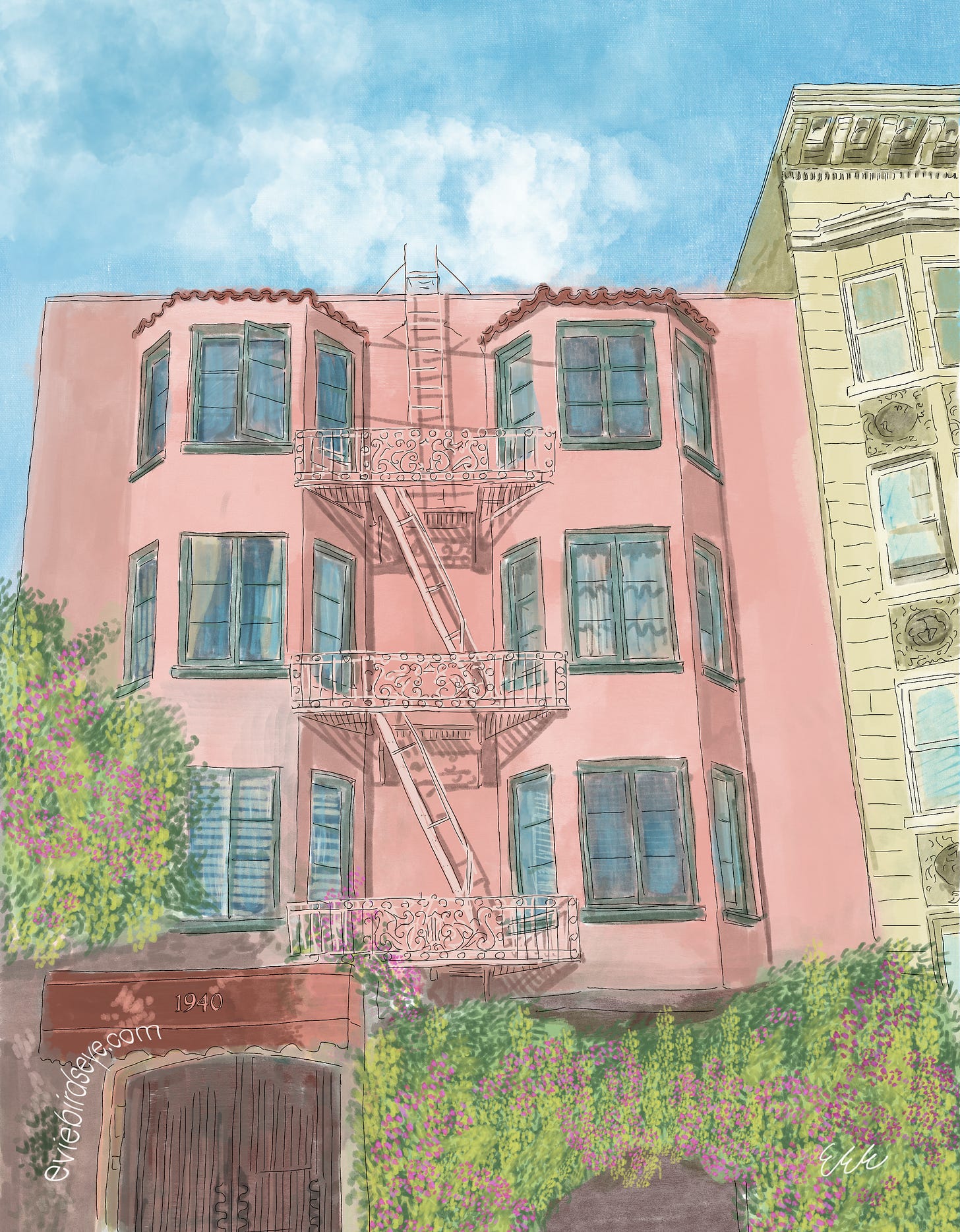The dissonance of a city
At the end of the day, cities are reflections of the people who inhabit them: inconsistent, flawed, and forever striving to be some better version of themselves.
I often find myself walking around or looking out of my window in awe of San Francisco’s architecture. Most of the buildings that catch my eye are unassuming from street level, until you look up and notice an eccentric, bright orange frame around a door, or an ornate sconce tucked away, two floors up.
This city forces me to adopt a certain cadence. I amble around in a stop-and-start manner, not just to pause to appreciate my surroundings every couple of blocks, but in order to catch my breath. The hills of San Francisco leave me steeling myself in preparation for another ascent, or panting for breath at the top until I make my way down again, praying that my knees carry me all the way. I can’t leave my apartment to accomplish an errand quickly and effortlessly; if I want to drop off my dry-cleaning or pick up an extra carton of milk (almond), I must invest my body and mind in an arduous, yet rewarding, climb and descent.
The staccato movement through this city also involves reconciling the dissonance between strolling to a nearby park and gazing lovingly at the blue bay with the destitution that pervades neighborhoods located just south of that. Moments of awe are therefore suspended when I walk among the debris scattered on the streets: pebbles of glass from car break-ins, discarded t-shirts, crushed bags of chips. I pass unhoused San Franciscans huddled together at the bottom of the steep hills, or weave my way through the smoke dispersed from the latest wildfire.
I wonder what it must be like to be a kid growing up here. How does a young mind absorb a world of such incongruousness? What does it feel like to grow up in a city where order meets disarray within a block? How do their parents explain the sharp contrasts between Pacific Heights’ view of purple rolling hills and the Tenderloin’s view of a grey dystopia? SF is not an anomaly by any means (what city doesn’t have egregious wealth disparities?) but it does hold a unique amount of discordance for 49 square miles.
While the physical surroundings change within a short distances, so too do the people. It turns out that the infamous microclimates of the Bay do not just pertain to the capricious weather patterns (although the quickness with which a cold SF fog can ascend when driving across the bay bridge is always going to astound me). There are social microclimates, too, which are dizzying to a newcomer who doesn’t quite know who she is yet. Do I spend my time with the hyper-optimizing tech bros, the super-fit gay men in the Castro, the gold-hooped ponytailed girlies in the Marina, the intense biker gangs (not the bearded, leather-clad kind), the tattooed, brooding bar tenders in the Mission, or the quiet beanie-d coffee shop regulars on Fillmore Street?
My own identity thus adopts this confusing scatteredness that San Francisco boasts. Stop being a teacher whose self worth relies upon the validation of school kids, start being an entrepreneurial go-getter. The city is a metaphor for where I contend in life right now. Like me, it holds glaring contradictions. And like me, it denies the dissonance it possesses, which manifests in a confused branding. Is this a beautiful, innovate tech hub bursting with opportunity or is it an unregulated crime-infused nightmare? Am I a high-achieving college graduate destined for greatness or an unemployed teacher begging for her friends and family to buy her art?
At the end of the day, cities are reflections of the people who inhabit them: inconsistent, flawed, and forever striving to be some better version of themselves. I’m grateful for the way that San Francisco — with her undulating topography and her ever-present incongruities — forces me to pause. In these moments, I can take stock of the way California street glows from the horizon, or the tenderness with which a mother holds her child’s hand outside of the grocery store, or the way an apartment building’s carefully painted turquoise window frames contrast with its peach-colored stucco.
If I can forgive San Francisco for all her deficiencies and still look up and marvel at her beauty, then shouldn’t I be able to do the same for myself?










Beautifully expressed...Susu